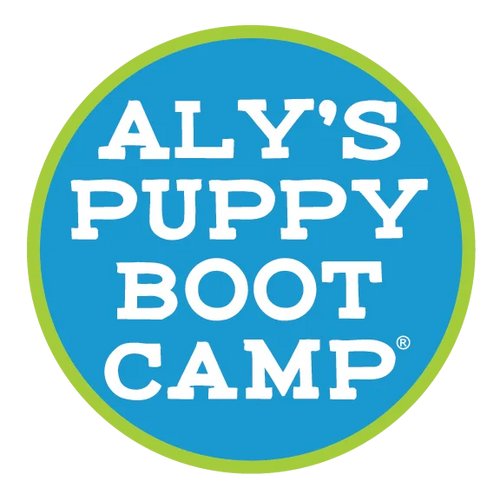Door Manners Matter: How to Teach Your Dog to Pause, Not Push
If you’ve ever been yanked through a doorway by your over-eager pup, you already know this truth: door manners matter—a lot more than you think.
Every door in your home is more than an exit or entry. It’s a training opportunity. From crates and car doors to backyard gates and front porches, each threshold is a chance to build respect, trust, and calm behavior.
Let’s break down how to make every door a moment of leadership—not a launchpad for chaos.
Why Door Manners Set the Tone
A dog who barges through a door is telling you something loud and clear: “I’m running this show.”
But here’s the deal… What happens at the door sets the tone for what happens on the other side. A dog that bolts out full-throttle is already in a hyper-aroused state. If that’s how the walk starts, it’s not going to magically mellow out once you hit the sidewalk.
Whether you’re heading out for a walk or just opening the crate after breakfast, the rules are the same: wait, watch, and move with intention.
Thresholds Aren’t Just Physical—They’re Mental
Let’s be clear: when we talk about “doors,” we mean ALL the doors.
-
Crate doors
-
Car doors
-
Front and back doors
-
Gates
-
Even the sliding door to the backyard
The goal is to teach your dog to wait calmly and move forward only when invited. Not because they’re afraid. Because they respect your lead.
And that begins with you.
Calm Starts with You
Here’s the step most people miss: you need to be calm too.
Before you even reach for the doorknob or unlatch the crate, pause. Take a breath. If your dog isn’t relaxed—wait. Breathe again. Your energy affects their energy, and the door is the perfect place to set the emotional thermostat for what’s next.
This isn’t about harsh commands or rushed routines. It’s about slowing down, getting intentional, and teaching your dog to do the same.
Don’t Underestimate the Sit
The Sit/Wait at the door is one of the simplest and most effective tools in your training toolbox. Here’s what it does:
-
Creates a calm state of mind
-
Builds impulse control
-
Teaches patience and respect
-
Prevents bolting (which can literally save your dog’s life)
If your dog can’t sit and wait at the door, don’t expect them to behave well outside of it. How they exit is how they show up.
Need help teaching the sit-stay with real-life reliability? Check out Aly’s Academy for full lessons on boundary building and everyday obedience.
Safety Isn’t Optional—It’s Essential
Let me be blunt: door bolting can kill a dog. I’ve seen it happen.
A pup darts through the door, straight into the street… and the unthinkable happens. That’s why I always say, I’d rather have a trained dog than a dead one.
Respecting space at doors is a safety issue. Full stop.
And the beauty? It’s a skill that ANY dog owner can master. Whether you’re brand new or seasoned, door manners give you a built-in structure you can practice every day.
Real-Life Reps Build Real Results
You open and close doors dozens of times a day. Why not use those moments to reinforce respect?
Every door is a chance to:
-
Help your dog look to you for direction
-
Practice a calm sit/wait
-
Reset the tone before the next activity
Consistency here pays dividends everywhere.
Your Body Is the Leash Before the Leash
One of the best things about threshold training? It teaches YOU how to move.
If your dog starts to surge forward, plant your feet. Hold your ground. Use your body as the block. This isn’t about yanking on a leash. It’s about using calm body pressure to communicate: We don’t move until I say so.
And when you do move, do it with purpose. Open the door, breathe, glance at your pup… then calmly invite them out. Now you’re both stepping forward in sync.
Need a leash that supports calm leadership? The Good Walker Leash is designed for exactly this—no gimmicks, no chaos, just smooth control from the first step out the door.
Make Doors a Part of the Pillars
At Aly’s Puppy Boot Camp, door manners are one of the first things we teach. Why?
Because respecting space is foundational to everything else. It’s one of the core strategies inside the Pillars of Pack Leadership®. And unlike flashy tricks or obedience drills, door training is something you can reinforce all day long.
So the next time you’re heading out, remember:
-
Breathe.
-
Wait for calm.
-
Use your body, not just your leash.
-
Invite your dog, don’t let them barge.
You don’t need a perfect dog to have peace at the door. You need a plan and a willingness to follow through.
Final Thoughts: Door Training Is Everyday Leadership
Teaching door manners isn’t a one-time event—it’s a way of life. And every time you open a door, you’re either reinforcing respect or allowing chaos to creep in.
The good news? You don’t need to carve out extra training time. You just need to make the everyday moments intentional.
Use the tools that work:
-
Aly’s Academy for on-demand lessons
-
The Good Walker Leash for steady control
-
Aly’s Insider Community for support and feedback
Because when your dog waits at the door, they’re not just showing obedience—they’re showing trust. And that’s the foundation for everything.



